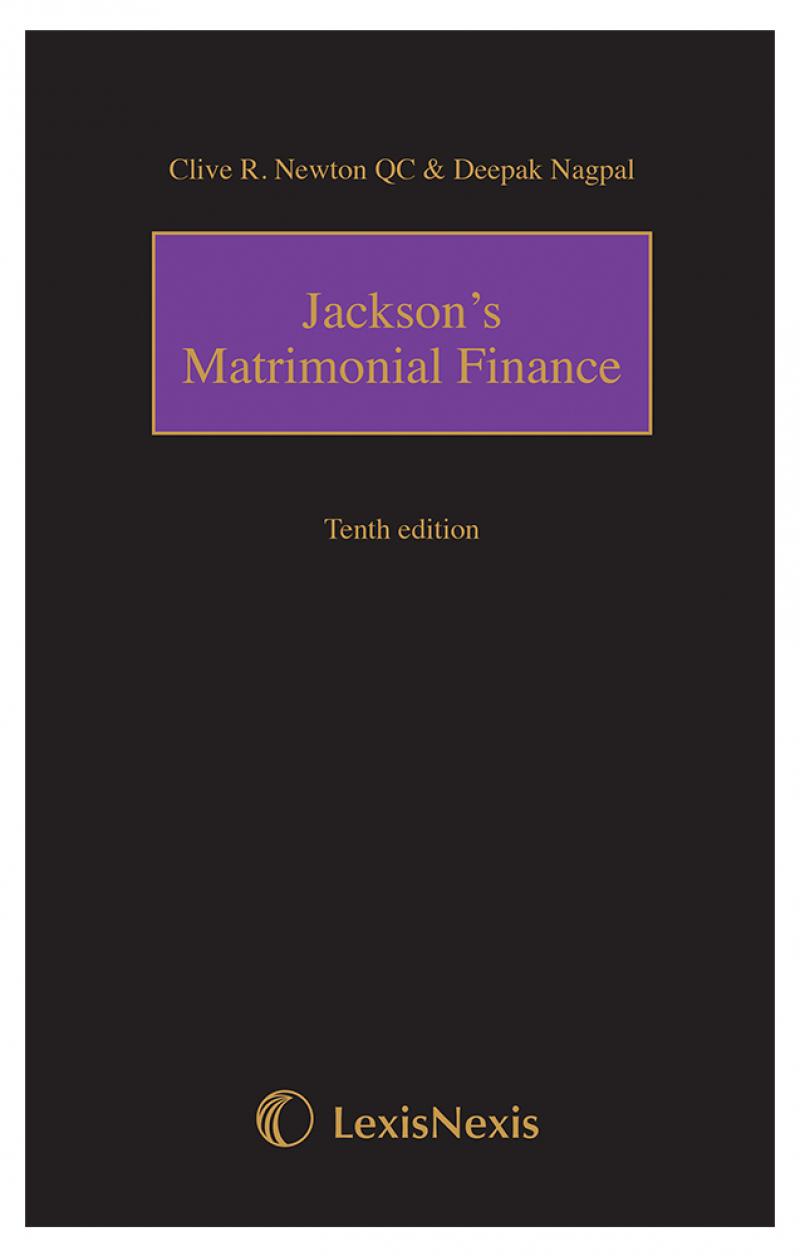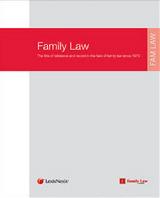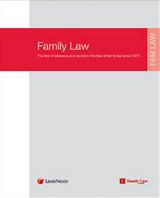- News & Comment
-
Online Shop
Online Services
Looseleafs
Law Reports
Books and eBooks
-
CPD & Events
Webinars
Events
- Authors
- About Family Law
- Contact












 31 MAR 2025
31 MAR 2025

 31 MAR 2025
31 MAR 2025

 31 MAR 2025
31 MAR 2025

 31 MAR 2025
31 MAR 2025

 31 MAR 2025
31 MAR 2025







When families come to strife, arrangements must be made for the future care of any children. In some circumstances, this means an application to the courts. These ‘private law orders’ can form part of a consent order, as in Re B-B. Others, are made under Sections 8(1)(a)-(b) and 9 of the Children Act 1989 specifying powers, amongst other things, to decide with whom a child is to live and when a child is to have contact. In 2019-2020, around 22,000 such applications were made involving some allegation of domestic abuse by one adult against another (para 3) with instances of domestic abuse rising because of Covid-19 (ONS, 2020). Consequently, the question of how allegations of abuse within family proceedings remains an urgent matter of concern. However, despite increasing recognition of coercive control as being central to understanding domestic abuse, it remains less well understood in the context of proceedings related to the future care of children. As explained by the Harm Panel in its Report: the approach to such allegations is ‘implemented inconsistently’ and is ‘not effective’ in its principal purpose of protecting victims (Harm Panel (2020) 7.1).
So, Re H-N [2021] EWCA Civ 448 offered the Court of Appeal the opportunity to provide this ‘general guidance’ on a matter of ‘great importance’ (para 1) - with each case in the combined appeals, outlined below, demonstrating the need for ‘proper understanding’ of domestic abuse and appropriate procedures. Although the case does well to address the inconsistencies in approach by offering an authoritative statement of the law – but does much less to address the ineffectiveness of approach in relation to the complexity and scope of the challenge. So, despite this case posing a valuable opportunity to clarify the law it is regrettable that the Court of Appeal declined to take forward any of the proposed options for reform. In deference to potential legislative reforms in the area, the Court keeps the law in its place – and leaves families in little better position than they were before.
2 Principles
Re H-N concerned the question of when fact finding hearings are necessary and appropriate. It did not ‘make new law’ (para 18) with the Court being aware of its institutional limitations (paras 19-21). The Court affirmed that abusive behaviour has an important bearing on future risk of harm (paras 52-54) and articulated the connection between abusive behaviour directed at an adult victim and its direct, indirect, environmental and cultural impacts on children (para 31).
Where there is an claim of ‘domestic violence’ which may have an impact on the outcome of a case, the court must decide whether fact finding is necessary and then make findings relating to these claims, to be considered as part of a holistic assessment of the best interests of the child (Re LVMH [2000] 2 FCR 40). The Court must decide whether, on balance, the allegations occurred (para 5) and will treat a finding that the allegations are less likely to have occurred than not as meaning that the allegations did not occur. Further guidance on handling allegations emerged in the form of Practice Direction 12J and in President’s Guidance, ‘The Road Ahead’. However, as Piper and Kaganas argue, the trajectory set by Re LVMH twenty years ago was always liable to create challenges and mistakes in application (Piper and Kaganas, 2010) and has led to well recognised problems for families and judges (Harm Panel (2020)).
Re H-N represents merely a shift in emphasis as compared with Re LVMH [2000] with its focus on ‘patterns of behaviour’ (para 25) taking account both intent and impact in context (paras 27, 32 and Re H-N below). This is significant, as demonstrated in Re T where the judge – despite finding that a serious incident of strangulation had occurred, relied on the father’s claim that he had not intended to cause serious harm in order to downplay the impact of the event on the mother. Likewise, in all of the combined appeals, there are challenges relating to assessing the events as part of a ‘pattern’ or ‘series of acts’ that must usually be ‘assessed cumulatively’ (para 4 citing, F v M [2021] and statutory guidance). In Re N-H, for example, the judge accepted there to have been an incident where the father slapped the mother but failed to consider this event in its broader context – the fact that she was pregnant at the time and that the violence resulted in a police call-out.
The Court explained that judges should focus on ascertaining, on balance, how the parties behaved towards one another without regard to categories or principles in criminal law (paras 60-74, citing Re R (Children) [2018] EWCA Civ 198). This is sensible and correct: the court is not equipped for making conclusions on criminal matters, nor should it be constrained by the structure of criminal law, which are calibrated in both process and substance for entirely different purposes. Given the unique factual context of family disputes, Cafcass as interveners argued that the ‘safeguarding letter’ is inadequate and that significant, early social-worker input could lead to a more ‘informed and child-centred basis’ for initial decision-making (para 39).
This, however, was a matter the Court of Appeal declined to take forward due to its apparent institutional limitations. Yet, the Court could have made a stronger statement in favour of such an approach – which may have yielded significant benefit across all cases. Moreover, the Court observed that deconstructing a ‘pattern’ of events into ‘Scott Schedules’ erects barriers to justice and can miss the broader picture (paras 48-49, see Re T below). This reflects the feminist insight that stresses narrative, context and relationality (Held, 2006), 15–17). Instead, narrative statements could provide a better road-map and means of eliciting information (para 48). This would have been in line with one of the Harm Panel’s proposals for an ‘investigative and problem solving’ approach based on ‘open enquiry’ to better ascertain the facts (Harm Panel, Chapter 11.2 (2020)) instead of this adversarial, bi-polar model. Accepting that the Court must be sensitive to its position.
Sometimes, however, it is ‘unnecessary and disproportionate’ to engage in full fact-finding (Re L [2017] EWCA Civ 2121, para 61 and Re H, below) with decisions relating to hearings best made early for the safety and wellbeing of children and victims (Practice Directive 12J, para 17 and s1(2) CA 1989). Synthesising PD12J and the President’s Guidance, the Court thus distilled a number of principles (para 37):
Understood as a pattern of behaviour, examination of ‘date specific factual allegations’ may no longer be ‘necessary’ (paras 56-57). The purpose is not to air or resolve allegations of abuse (para 58(a)-(b)) so, once a hearing is determined to be necessary then only those allegations as would be necessary to the order need be examined (para 58(c)). To facilitate this, both parties ought to provide statements outlining their experiences of living with one another (para 58(d)). Use of structured, narrative statements could, if forming part of a nuanced and contextual approach, start to mitigate the limitations of the current process but will form only the starting point for more fundamental reforms in the future.
3 The four appeals
This final section outlines the four specific appeals, providing their principal findings and relating these to the principles and critiques set out above.
Re B-B
Re B-B considered an appeal against a consent order setting out the time to be spent by the father with their child. The issue was whether the judge was wrong to issue such an order without deciding the facts of serious allegations of abuse, including rape, and whether the judge’s inappropriate comments undermined the mother’s ‘consent’ to the order granted? The Court concluded that the judge’s ‘unguarded comments’ – including that the child could be placed for adoption and that social services would be involved – had ‘long lasting repercussions’ for the mother (para 108) and amounted to such a serious procedural irregularity that the appeal was allowed on this ground. The comments made by the judge were, to a large extent, contextualised and played down by the Court. Although it did ultimately conclude that these had a lasting effect on the fairness of the process as a whole, the seriousness and potentially traumatic nature of the judge’s remarks ought to have yielded greater censure. On the other hand, the Court could have also taken the opportunity to emphasise the impact of resources limitations on the functioning of the process – with chronic, systemic underfunding leading to more and more individual instances such as Re B-B (Harm Panel (2020) 11.1).
Re H
Re H concerned the case of a couple whose relationship deteriorated into violence and a rape by which H was conceived. Over the course a year, the mother was subjected to further instances of abuse and the relationship came to an end (paras 119-120). The judge initially failed to consider claims of ‘financial and emotional abuse’ as relevant to the child arrangements and decided that the mother had not been raped on the occasions she claimed (para 125). Although the mother did not oppose contact with the father, she sought to challenge the recital to the order which stated that her allegations were unproven. Described as ‘academic’ (para 145), the Court held that even for serious accusations it is not always ‘appropriate or necessary’ to hold a hearing (para 139) and dismissed the appeal (paras 151-154). This case demonstrates both the limitations of the process – restricted as they are to ascertaining necessary facts in relation to making and order and that the process may, at times, not connect with the desires and expectations of families. In this case, the authoritative expressive function of the order – rather than its substantive content – was what caused the mother’s complaint. Legal rules are ‘social forces’ with potentially therapeutic and anti-therapeutic consequences. The underlying principle of this approach is that when law can be used to promote therapeutic consequences and these are in line with legal values there are good reasons to do so (Perlin 2017). Although, given the resource constraints on courts, this approach may be justified, in instances where there is therapeutic value and negligible costs it may be right consider air the facts.
Re T
This case concerned allegations of rape during the course of a brief, verbally and physically abusive and controlling marriage (paras 156-157). The judge examined a series of allegations – finding the mother’s evidence at times to be ‘embellished’ and ‘inconsistent’ (para 161) but accepting her claims of physical violence, strangulation and threats. The question was whether the judge had failed to appreciate the significance of the findings she made, putting undue emphasis on the father’s intentions instead of the very serious impact on the mother and the child (para 173-174). The judge failed to ask whether these instances established a pattern of coercion and/or control (para 174). The Court held that the judge erred by not considering her findings ‘as a whole’ nor appreciating their true seriousness (para 178). This is therefore illustrates well the limitations of the law’s focus on proof of individual events when this fails to connect these to the narrative context of the whole story between the parents and children. Re-iterating that fact-finding must be necessary for the purposes of determining an order and not to pursue ancilliary purposes, the Court focused on the welfare of the child. Ultimately, the Court allowed the appeal and remitting the case to a different judge to determine the necessity of further fact-finding (para 184).
Re H-N
The final case concerned an allegation of rape against the father. Having lived together in the UK, the father returned to France with the children and the relationship persisted before coming to an end around Christmas, at which point the mother sought the return of H-N and B (a child from a previous relationship). Following the mother’s successful claim under the Hague Convention the father sought permission to remove H-N back to France (para 192). In the course of this application, the mother filed a schedule of allegations of rape and physical, psychological and emotional abuse (para 193). The judge accepted certain ‘minor’ instances of abuse following the father’s limited admissions, but went on to make a series of serious comments downplaying their importance and aired views that litigants might allege abuse in order to obtain professional sympathy and public funding (para 194-198).
The Court of Appeal held that the judge failed to sufficiently account for these various allegations. For example, the judge failed to note the seriousness of a slap to the mother’s face, leaving redness and leading to a Police call-out. Nor did he contextualise that claim, failing to observe its relationship to a controlling incident (opening of post) nor the fact that she was pregnant (para 201). The Court went on to list numerous other failings and omissions, concluding that the judge’s reasoning was ‘seriously flawed’ and remitted the case for case management by the Designated Family Judge (para 223). Despite censuring the judge in this instance, the Court of Appeal still underemphasises the severe consequences of the judge’s inappropriate conduct.
Conclusions
Following Re N-H the law has been authoritatively clarified. The issue of inconsistent application demonstrated by the four appeals and the empirical work of the Harm Committee - may be mitigated, although until social misconceptions around domestic abuse it is unlikely that the judicial culture will eliminate some of the stereotypical and harmful attitudes demonstrated in these cases. However, the law will not change following this decision and the process for handling fact finding hearings will remain constrained by the existing framework, with its use of schedules and limited resources.




